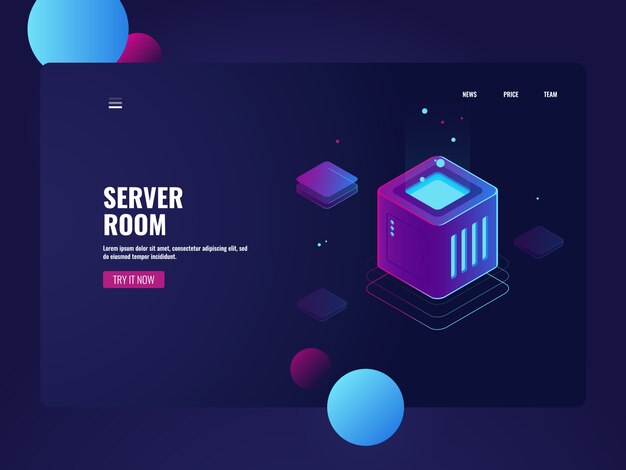Understanding the Allocation of Cybersecurity Budgets 2023 – 2024
In today’s interconnected world, ensuring the safety of digital assets has become a paramount concern for organizations of all sizes. As threats evolve and become more sophisticated, allocating resources effectively is critical to safeguarding valuable information and maintaining trust with clients and stakeholders. Understanding how to navigate the complex landscape of protective measures is essential for any group looking to enhance its security posture.
Diving into the specifics of financial distribution for secure practices reveals a myriad of components that warrant careful consideration. This involves evaluating various facets such as software solutions, personnel training, preventative technologies, and incident response strategies. Each element plays a vital role in creating a robust framework to mitigate risks and respond effectively to potential breaches.
Organizations must not only comprehend the direct costs associated with defensive measures but also recognize the potential ramifications of underfunding their protective strategies. Balancing expenditures while striving to minimize vulnerabilities is an ongoing challenge that requires a well-thought-out approach. By analyzing different facets and prioritizing investments, leaders can foster an environment conducive to resilience against emerging threats.
Understanding Cybersecurity Budget Components
Managing financial resources allocated to protect digital assets is crucial for any organization. The effective distribution of funds can significantly impact a company’s resilience against threats and vulnerabilities. By grasping the various elements that constitute this financial plan, businesses can better prepare themselves to face an evolving threat landscape.
Key Elements of Financial Allocation
The allocation typically includes expenses related to technologies, personnel, training, and compliance. Investments in advanced tools and software are essential to strengthen defenses, while hiring specialists ensures that there is expertise available to monitor and mitigate risks. Furthermore, ongoing training for staff members is vital to enhance awareness and foster a security-conscious culture. Lastly, adhering to relevant regulations and standards can incur additional costs but is necessary for securing both trust and operational integrity.
Evaluating and Adjusting Expenditures
Regular assessment of spending is necessary to ensure that resources are being used effectively. Organizations should analyze past incidents and current trends to refine their financial priorities. By staying informed about emerging threats and technologies, companies can make informed decisions and adjust their financial allocations accordingly, ensuring they remain one step ahead in safeguarding their digital environments.
Prioritizing Cybersecurity Risks and Threats
Addressing the landscape of digital vulnerabilities requires a strategic approach to identify the most significant threats. By focusing on potential risks, organizations can allocate resources more effectively and enhance their protection measures.
To successfully prioritize potential dangers, consider the following steps:
- Risk Assessment: Conduct a thorough evaluation to understand potential vulnerabilities within your systems.
- Impact Analysis: Determine the consequences of a security breach, assessing the potential damage to operations, finances, and reputation.
- Likelihood Evaluation: Analyze the probability of different scenarios occurring, helping to focus on the most plausible risks.
- Compliance Requirements: Stay informed about regulations that may mandate certain protective measures, influencing your prioritization process.
- Threat Intelligence: Utilize data on emerging threats to adjust your risk management strategies accordingly.
By implementing these practices, organizations can create a prioritized list of threats, ensuring that defenses are robust and aligned with the most pressing risks.
Key focus areas often include:
- Data Breaches
- Phishing Attacks
- Insider Threats
- Malware Incidents
- Service Disruptions
Ultimately, a proactive approach to identifying and prioritizing risks not only mitigates threats but also fosters a culture of security awareness throughout the organization.
Essential Tools for Effective Protection
In today’s digital landscape, the landscape of threats continues to evolve, making it imperative for organizations to invest in reliable resources that safeguard their assets. Employing the right technology is crucial for maintaining a strong defense against potential breaches and vulnerabilities. This section delves into key instruments that serve as the frontline of protection.
- Firewall Solutions: These act as barriers between trusted internal networks and untrusted external networks, monitoring incoming and outgoing traffic.
- Antivirus Software: This software identifies and eliminates malware, providing an essential layer of defense against malicious threats.
- Intrusion Detection Systems (IDS): IDS monitor network traffic for suspicious activity and known threats, ensuring timely alerts and proactive responses.
- Encryption Tools: By converting data into a secure format, these tools protect sensitive information from unauthorized access during transmission and storage.
- Multi-Factor Authentication (MFA): This security measure requires multiple forms of verification, thereby enhancing access control and minimizing the risk of unauthorized entry.
- Security Information and Event Management (SIEM) Systems: SIEM platforms collect and analyze security data from across the organization, facilitating real-time threat detection and incident response.
- Backup Solutions: Regularly backing up data ensures recovery in case of loss due to cyber incidents, accidental deletion, or system failures.
Utilizing these tools holistically empowers organizations to create a robust defense against an array of cyber threats, ultimately fostering a safer operational environment.
Employee Training and Awareness Programs
Investing in the development of personnel is a vital component of maintaining a secure environment within any organization. Programs designed to enhance knowledge and skills among staff members can significantly reduce risks and transform employees into the first line of defense against potential threats.
These initiatives typically cover a variety of topics, ensuring that employees are not only informed but also capable of identifying and responding to various security challenges. Key aspects often included are:
- Understanding common threats such as phishing, malware, and social engineering.
- Recognizing the importance of strong passwords and secure authentication methods.
- Training on proper data handling and sharing practices.
- Awareness of privacy regulations and compliance requirements.
- Incident reporting protocols and procedures.
Moreover, ongoing training and regular updates are essential to keep the workforce aware of emerging trends and tactics used by malicious actors. To enhance engagement, organizations might consider implementing:
- Interactive workshops and seminars.
- Simulated attack exercises to practice real-world scenarios.
- Regular assessments and quizzes to evaluate understanding and retention.
- Incentives for participation and achievement in training programs.
Ultimately, fostering a culture of security awareness empowers employees to act effectively when faced with potential risks, leading to a more resilient organization overall.
Regulatory Compliance and Legal Considerations
In today’s digital landscape, adhering to governing standards and legal requirements is crucial for organizations striving to protect sensitive data and maintain stakeholder trust. Non-compliance can lead to severe penalties and reputational damage, making it imperative for entities to stay informed about relevant regulations and industry norms.
Understanding the framework of laws and guidelines is essential for crafting effective security measures. Various mandates may apply, depending on the nature of the business, the types of data processed, and the geographic location. Key considerations include:
- Data Protection Regulations: Legislation such as GDPR, CCPA, and HIPAA establishes protocols for handling personal information and ensures individuals’ rights are respected.
- Industry Standards: Compliance with standards like PCI-DSS for payment processing or ISO/IEC 27001 for information security management may be required.
- State and Local Laws: Different regions may have specific laws governing data security, necessitating a tailored approach to compliance based on jurisdiction.
Organizations must also consider the implications of non-compliance:
- Financial Penalties: Fines can escalate quickly if regulations are violated.
- Legal Consequences: Potential lawsuits from affected parties can arise.
- Reputational Damage: Trust can be eroded among customers and partners, impacting future growth.
To navigate this intricate landscape, it is vital for organizations to invest in training, implement robust compliance programs, and regularly review their practices to align with evolving regulations. Doing so not only safeguards the organization legally but also enhances overall operational resilience.
Evaluating ROI of Cybersecurity Investments
Assessing the return on investment related to protective measures is a crucial step for any organization aiming to secure its digital landscape. Understanding the impact of these financial commitments allows stakeholders to make informed decisions regarding resource allocation and strategic planning. The effectiveness of such expenditures can significantly influence overall operational resilience and risk management capabilities.
Measuring Financial Impact
To effectively gauge the financial returns of invested resources, companies should consider both direct and indirect benefits. Direct returns are often quantifiable through cost savings from avoided incidents, while indirect benefits may include enhanced reputation, customer trust, and improved employee morale. A comprehensive analysis requires careful tracking of potential threats mitigated and incidents prevented, translating these factors into monetary values where possible.
Assessing Operational Efficiency
Operational efficiency serves as another vital component in evaluating investment effectiveness. Implementing robust systems can lead to streamlined processes and reduced downtime, which directly correlates with cost efficiency. Moreover, organizations must analyze the improved response times to incidents and the ability to maintain compliance with regulatory requirements. This holistic view not only helps in quantifying returns but also reinforces the importance of sustaining a proactive stance against emerging threats.

